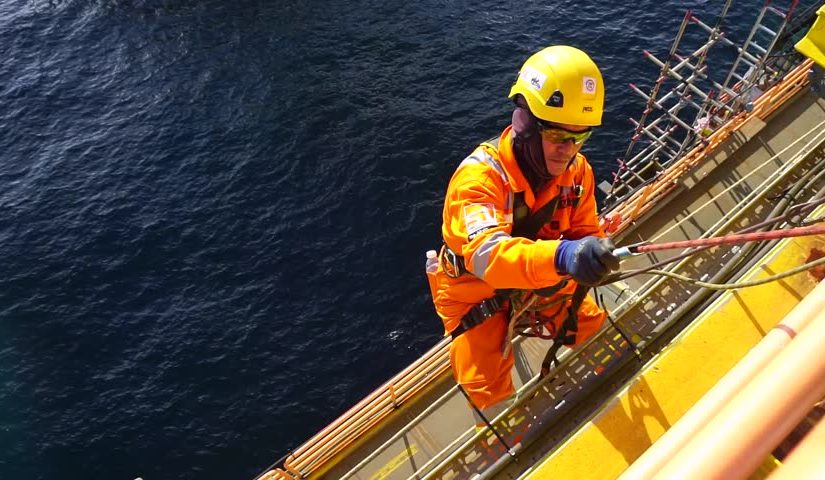Travelling on a ship can be fun but it is also equally dangerous. Marine accidents happen frequently and can be avoided if proper safety procedures are followed. To minimize the hazards and injuries while travelling on water, proper precautions must be taken.
Apart from the safety regulations made mandatory for each ship by the IMO and the safety equipment carried for personnel protection on each ship, there are some safety measures that need to be taken by seafarers to ensure personal safety on the ship.
Here is a brief overview of the same.
Taking Care of Personal Safety on Ships
Personal safety primarily includes the various ways and means which sailors can adopt to stay safe on an individual level, such as careful movement around the ship, steady handling of heavy cargo, etc. In addition, appropriate use of safety equipment is also a part of personal safety on ships.
Some of the most imperative measures from these are listed as follows:
- Wearing Protective Clothing
It is imperative to wear comfortable and well-fitted clothes on board a ship as loose clothes can get caught in the machinery and cause injuries. Proper footwear with slip-resistant soles helps in minimizing the risks of slipping and must be worn at all times on the ship. Apart from these, wearing the appropriate gloves to protect the skin from exposure to heat, chemicals, sharp edges, etc., is a must.
- Personal Protective Equipment
Personal protective equipment includes safety helmets, shoes, goggles, ear-muffs, safety harness, life-jackets, life rafts, etc., which is used to safeguard the individual seafarer from any harm. This equipment is mandatory for ships to ensure that there are no fatalities due to lack of life-saving appliances. The crew also needs to be aware of where the equipment is kept and trained to know how all appliances are to be used.
Dust masks are an additional, essential requirement while working in a toxic atmosphere or during the servicing of the ship. All this equipment needs to be checked at regular intervals to ensure that it is functioning properly and should be replaced if it is not.
- Safety Equipment for the Crew
Apart from personal life-saving devices used aboard ships, there are safety equipment for the entire crew, including lifeboats, fire extinguishers, fire suits and breathing devices, emergency medical equipment, and distress signals for summoning help.
The operating crew must be well-trained in using the communication equipment with due awareness of all necessary protocols. In addition, the communication equipment must be checked regularly to ensure that it is working without a hitch.
- Movement About the Ship
On ships carrying heavy cargo, the containers should be securely tied at all times. Sudden lurching of the ships may cause these to dislocate if not tied properly, which can result in major bodily harm. It is necessary to be constantly on alert for slippery patches, unguarded railings, or open hatches through which people may fall. While walking around the ship in rough weather, the mantra ‘one hand to the ship’ must be mandatorily followed to prevent being thrown overboard.
- Appropriate Use and Placement of Tools
Portable tools and equipment must be carried with both hands. In case of climbing or descending a staircase, the equipment should be carried in a tool belt (if handy) or across the body, leaving the hands free for a firm grip. Portable power tools such as drills and welding equipment should be checked before operation and must be used only by professionals.
Safety guards should be set up as required before starting the work.
This is imperative because live wires can cause shock or sparking, which can lead to fires. Firefighting equipment like portable fire extinguishers must always be kept handy in case of an emergency.
- Steady Handling of Dangerous Cargo
Cargo often consists of highly flammable fuels and other such dangerous materials. Such cargoes must be stored away from the passengers. Safety instructions must be followed and the cargo must be labeled and segregated according to its nature. The containers must regularly be checked for any spills or leaks as they can prove to be hazardous.
Goods on the ship, if not kept properly, are at a risk of moving and falling. This can cause passengers to get hurt. Such cargoes must be stashed low and tied securely so as to avoid any mishaps.
- Mooring
Mooring is the process of anchoring the ship to the docks, using equipment such as ropes, cables, chains, deadweight anchors, etc. During this process, the passengers must stay away from the mooring area. While mooring goods and cargo, ropes under tremendous strain can break and cause damage. The entire area should be cleared before mooring.
The safety of the ship depends upon the safety of the passengers. Therefore, it is necessary to put your own safety first and take the proper precautions and follow the rules while travelling onboard a ship. The SOLAS convention of 1914 has been a pathbreaker in this area, emphasising the necessity of maritime safety. Not only has the act taken ship and seafarer safety to new heights, but it has also spurred many amendments by the IMO to improve cargo management.
Ship and safety equipment manufacturers in India provide all the required safety gear while travelling on water. The stringent regulations for provision of adequate personal life-saving appliances and regular safety training has led to a significant reduction in the loss of life due to shipping accidents.



